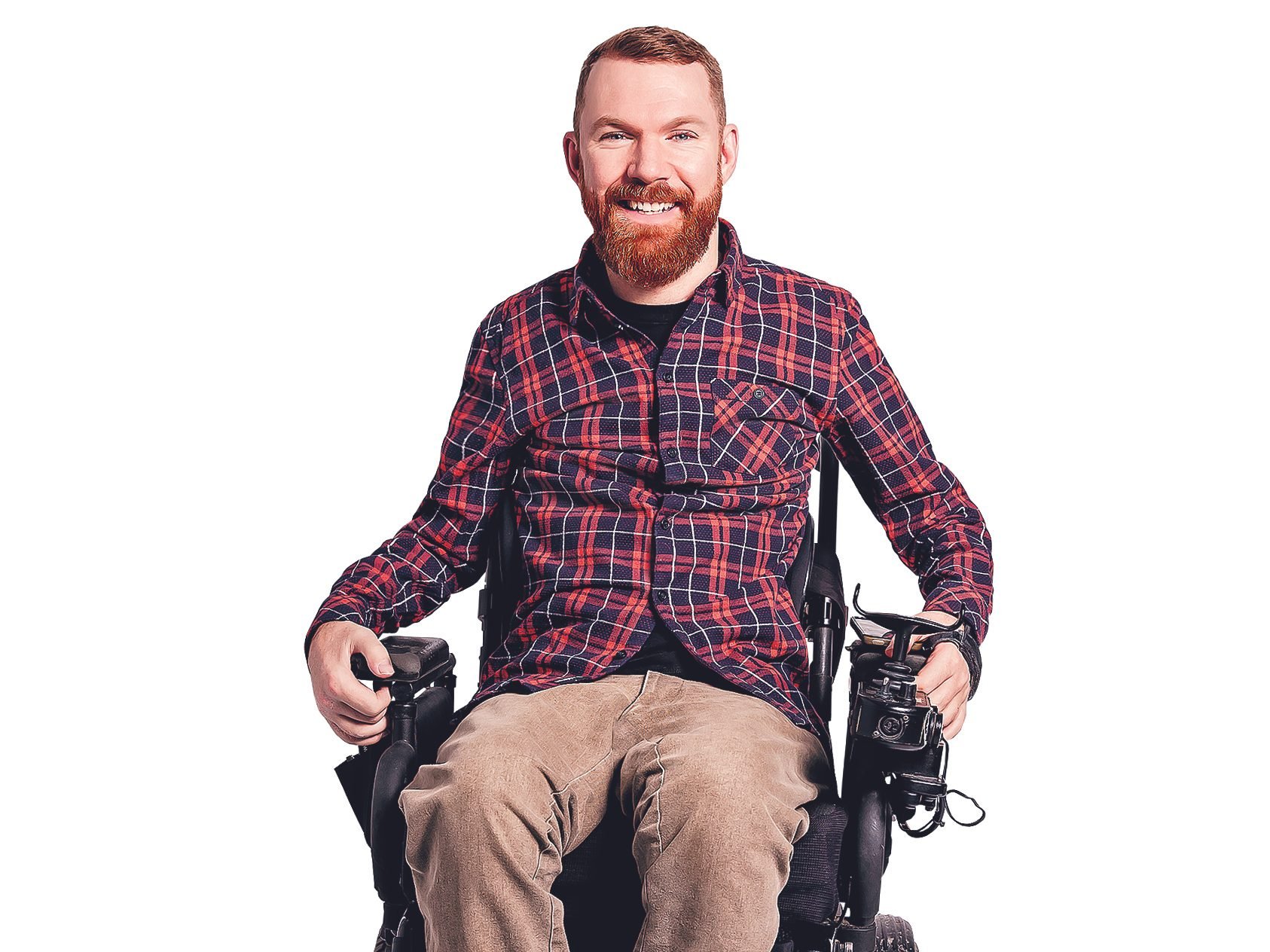Luke Anderson, Trailblazer
With his StopGap ramps, Luke Anderson is building a more accessible Canada.

A poorly placed automatic door button, a narrow elevator or a single step at the entrance to a shop. The majority of Canadians will navigate these common design flaws without much thought, but for the 11 per cent of the population that lives with a physical disability, they are yet another hurdle.
Luke Anderson has faced many of these obstacles first-hand. While mountain biking in British Columbia in 2002, the avid outdoorsman missed an eight-metre jump and sustained a spinal cord injury that rendered him quadriplegic. “My life changed in a split second when I crashed,” says Anderson, now 38. “And I quickly learned the world isn’t well-suited for someone who uses a mobility aid.”
Anderson moved back home to Toronto following his accident but struggled to recover his old self-confidence. He eventually returned to work as a structural engineer and in 2006 landed a coveted job with a sizable drawback: three tall steps at the building’s entrance. Every time Anderson wanted to enter or exit, a colleague had to set up an unwieldy ramp. It was a logistical nightmare that eliminated any spontaneity from his day.
During his years at the engineering firm, the problem of those steps was never far from Anderson’s mind. But it wasn’t until he heard of the Good Bike Project-where local artists painted broken bicycles vivid hues and used them to mark areas of historical or cultural importance around the city- that Anderson saw an opportunity. Portable, brightly coloured ramps could be a temporary solution, as well as an awareness-raising tool, for the widespread problem of stepped entranceways.
In the fall of 2011, Anderson and a friend solicited donations of wood and paint from hardware stores in the Junction, a neighbourhood in Toronto’s west end, and recruited volunteers by knocking on doors. The pitch: through their Community Ramp Project (which would later become the StopGap Foundation), they would provide shops with lightweight, weatherproof, fully customized ramps, free of charge.
They built 13 ramps in those first few months; once word got out, dozens of businesses across the city began submitting requests. For Attila Szanyi, ordering a ramp for his upscale corner store, Popbox Mrkt., was a no-brainer: “As a business owner, all you want is for people to have easy access to your shop. You don’t want to exclude anyone.”
Dan Harvey, who has used a wheelchair since a trampoline accident in his teens, has frequently felt excluded living in London, Ont. The city’s historic architecture can be challenging for people with disabilities. “That one step is what will prevent me from going out to dinner with my wife, from buying a new pair of pants, from having a drink with friends,” explains Harvey, 30. In 2015, following Anderson’s lead, Harvey brought StopGap to London. In just three months, Harvey and his team of volunteers raised $4,000 for their initiative and provided 59 businesses with accessible entranceways.
Harvey is just one of hundreds of people who have launched StopGap satellites in their communities since the project began: 800 technicolour ramps can now be seen in 34 cities, from Richmond, B.C., to Halifax. The group’s website features a catalogue of free resources to help volunteers conduct outreach, build their ramps and fund-raise (each unit costs upwards of $300 to construct).
As their name suggests, the StopGap ramps aren’t intended to be a permanent solution. Anderson hopes they foster a wider conversation around accommodating people with disabilities in public spaces, and that they put pressure on municipalities to mandate accessible buildings. “We need the places where we live, work and play to be good for everybody,” says Anderson. “At the root of all this is a human right, the right to equal access.”
Related features:
Hearts & Hammers
Saving Syria-One Student at a Time
Meet The Smoke Detector: Victor Fernandez



